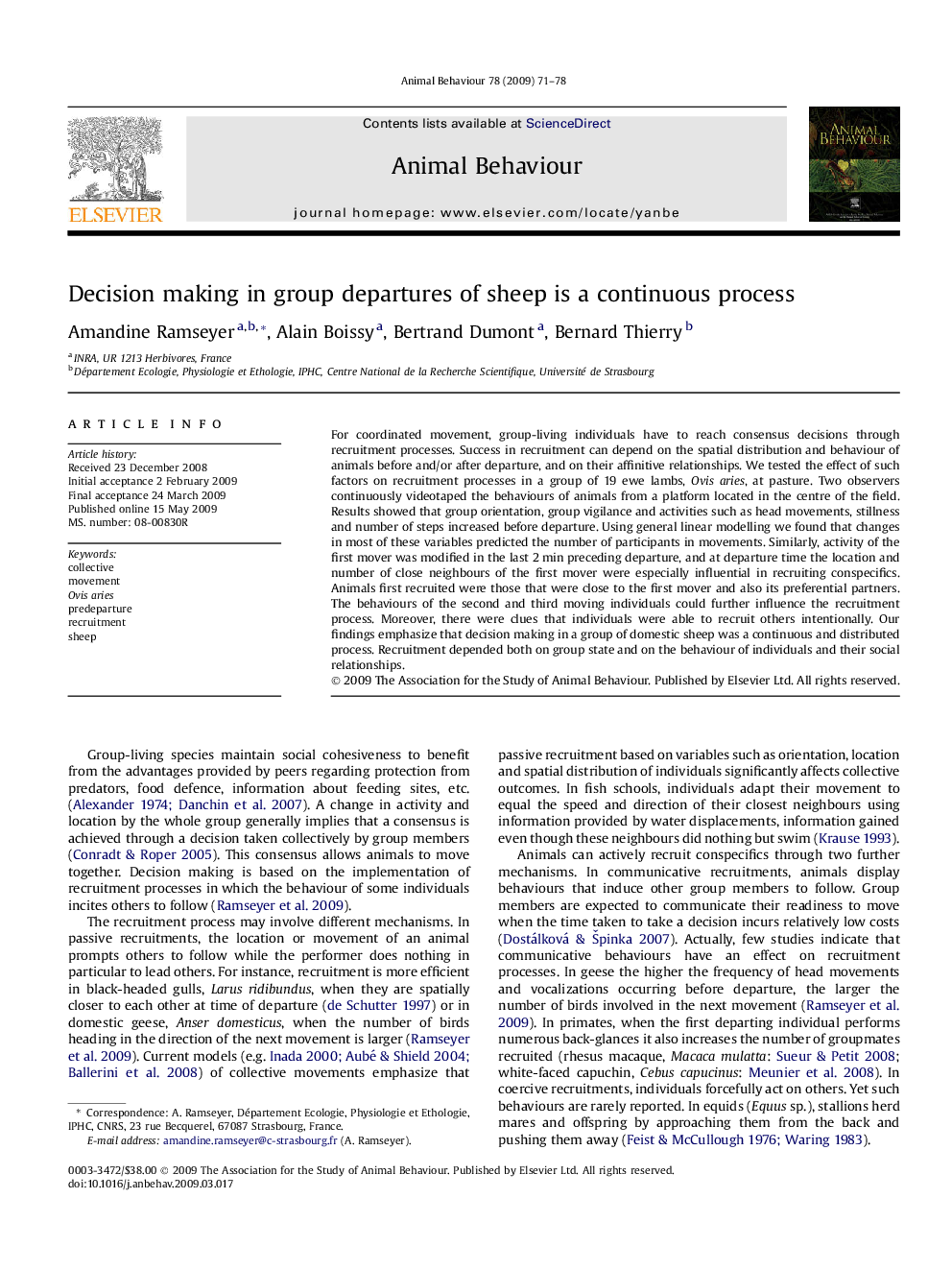| Article ID | Journal | Published Year | Pages | File Type |
|---|---|---|---|---|
| 2417584 | Animal Behaviour | 2009 | 8 Pages |
For coordinated movement, group-living individuals have to reach consensus decisions through recruitment processes. Success in recruitment can depend on the spatial distribution and behaviour of animals before and/or after departure, and on their affinitive relationships. We tested the effect of such factors on recruitment processes in a group of 19 ewe lambs, Ovis aries, at pasture. Two observers continuously videotaped the behaviours of animals from a platform located in the centre of the field. Results showed that group orientation, group vigilance and activities such as head movements, stillness and number of steps increased before departure. Using general linear modelling we found that changes in most of these variables predicted the number of participants in movements. Similarly, activity of the first mover was modified in the last 2 min preceding departure, and at departure time the location and number of close neighbours of the first mover were especially influential in recruiting conspecifics. Animals first recruited were those that were close to the first mover and also its preferential partners. The behaviours of the second and third moving individuals could further influence the recruitment process. Moreover, there were clues that individuals were able to recruit others intentionally. Our findings emphasize that decision making in a group of domestic sheep was a continuous and distributed process. Recruitment depended both on group state and on the behaviour of individuals and their social relationships.
